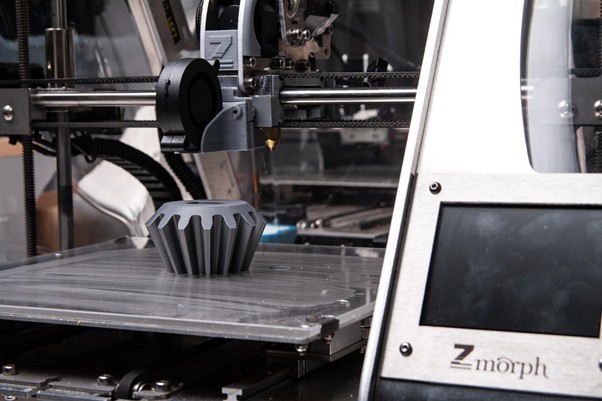Photo Credit: Pixabay
It goes without saying that starting a 3D printing business requires a substantial start-up budget. However, there is no fixed amount that will work for all. What is more, you can significantly reduce it if you approach this question smartly. Let’s dig deeper so that you get an idea of how much money (approximately) you need to have in your pocket to start your business and how to avoid overspending.
3D Printing Business — Budget for Starters
The cost of running a 3D printing business is made up of different parts. First, the prices of 3D printer parts vary a lot. Printers for beginners start at about $2,000, and high-end hardware that can make industrial-grade prototypes may cost more than $25,000. This investment is very important for your company to become a star in digital manufacturing and make sure that production is quick and of high quality.
At the same time, you need to think about how much it costs to print products and tools. The cost of 3D printing materials covers plastics, filaments, and other things that are used up quickly. For instance, good fibers can cost anywhere from $50 to $100 per kilogram, and the total cost of materials may make up 10 to 20 percent of your initial investment, depending on how much you plan to make.
Setting up an office costs a lot of money too. Whether you rent a space or turn a room in your house into a 3D printing office, you should make sure that it meets both space needs and government regulations. Depending on where it is located and how big it is, renting a small industrial place can cost anywhere from $1,000 to $2,500 per month. This is necessary to keep a business running professionally.
The costs of marketing and branding are both important. A well-thought-out mix of digital and classic marketing helps get things going. Spending between $2,000 and $5,000 on initial campaigns can help you get more attention. It is also a good idea to assign software development for startups to a professional company. Thus, you can be sure that it is done according to the best practices.
How to Handle Your Investment in a 3D Printing Startup
There are a couple of tricks that will help you keep your spending under a belt and avoid wasting your budget on unnecessary things:
- Regularly check how well the equipment is working to get the most out of your 3D printing business investment and cut down on repair costs.
- To keep the cost of 3D printing materials low, agree with suppliers on buying in bulk.
- Think about office options that can be expanded as your business grows.
- To get the most out of your 3D printing budget, use digital tools and data to keep an eye on your marketing costs.
Focus on these core areas to start a 3D printing business venture on the right foot — allocate your cash wisely and build a strong presence in the market.
Is It Possible to Start a 3D Printing Company With Almost No Money?
You can start a 3D printing business with little money upfront if you carefully plan your 3D printer equipment costs and look into different ways to pay for them. For example, you can rent high-tech 3D printers to get started with 3D printing while still letting you use the latest tools. To begin, you can run a small business out of your home and focus on making samples with cheap 3D printing materials and a simple 3D printing workplace. This approach cuts down on costs and start-up budgets, which are very important when figuring out how much a 3D printing business costs.
Online sites are a cheap way to keep track of your marketing costs for 3D printing projects. Using focused online ads, social media, and digital networking can cut advertising costs by a large amount compared to traditional methods. By focusing on specific groups, like product designers or small businesses, you can get the most out of your original investment because you’ll be talking to people who are ready to listen. Working with a professional 3D studio can also enhance your marketing visuals and prototypes, especially if they specialize in high-quality rendering and modeling services tailored to product-based startups
Entrepreneurs should also look into different funding options. Seed investors, crowdfunding, or even SBA loans — these are some of the options that can have a direct effect on the funds for the growth and security of a 3D printing business.
Quick Tips for Starting a 3D Printing Business That Won’t Break the Bank
- Look into rental and credit options to lower the cost of buying a printer upfront.
- Start working from home to save money on rent for an office.
- To keep advertising prices low, use internet marketing techniques.
- Find special markets and go after them to get better results on your investments.
Benchmarks from real life show that businesses that start out in someone’s home can save up to 30% on office costs compared to getting a commercial place. Using online marketing techniques has also been shown to cut the cost of marketing for 3D printing by up to 50% compared to old-fashioned ways of selling.
Final Say!
A budget plan should be tailored to the specific needs of your business. However, the good news is that you can control it and lower your spending. Just follow the above tips and see the difference.
Emily Henry writes for UKWritings Reviews and Write My Research Paper. She writes articles on many subjects including writing great resumes. Emily is also an editor at State Of Writing.





![‘Frankenstein’ Review – Guillermo del Toro’s Definitive Look At The Nature And Nurture Of Monstrosity [TIFF 2025] ‘Frankenstein’ Review – Guillermo del Toro’s Definitive Look At The Nature And Nurture Of Monstrosity [TIFF 2025]](https://cdn.geekvibesnation.com/wp-media-folder-geek-vibes-nation/wp-content/uploads/2025/10/Frankenstein-175_PF_20240430_20377_R-300x200.jpg)
![‘Wake Up Dead Man: A Knives Out Mystery’ Review – In Rian Johnson We Trust [LFF 2025] ‘Wake Up Dead Man: A Knives Out Mystery’ Review – In Rian Johnson We Trust [LFF 2025]](https://cdn.geekvibesnation.com/wp-media-folder-geek-vibes-nation/wp-content/uploads/2025/10/Wake-Up-Dead-Man-A-Knives-Out-Mystery-300x169.jpg)